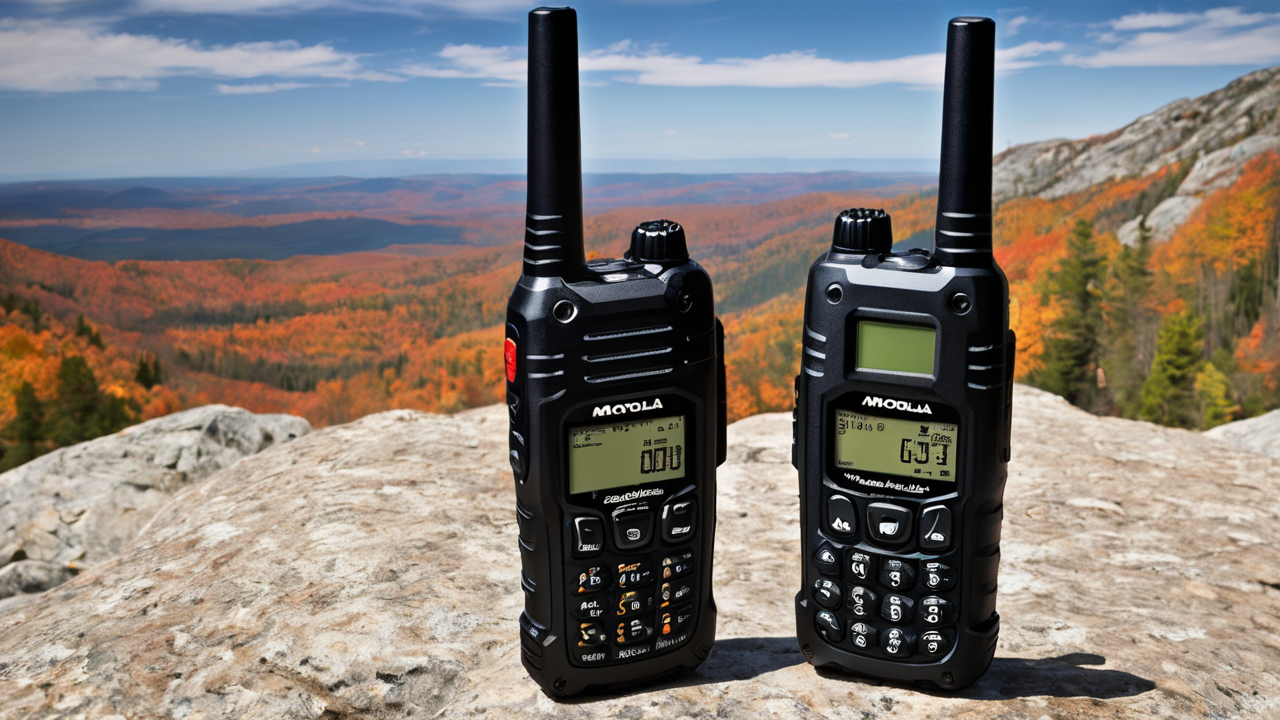Introduction to Long-Range Walkie-Talkies
Understanding the Need for Long-Range Communication
Long-range walkie-talkies are vital for many activities. They help people stay connected in remote areas.

These devices are useful for outdoor enthusiasts, emergency responders, and event organizers.
Long-range communication is crucial when cell phones don't work. It can be a lifesaver in emergencies.
Hikers use them to stay in touch with their group. Construction workers coordinate on large sites.
Walkie-talkies offer instant communication. They're easy to use and don't need cell towers.
For many, they're a reliable backup to modern tech. They work well in areas with poor cell coverage.
Key Features of Long-Range Walkie-Talkies
Long-range walkie-talkies have several important features. Range is the most crucial aspect.
Good models can reach up to 35 miles in ideal conditions. However, actual range varies with terrain.
Battery life is another key feature. Look for devices that last at least 8-10 hours.
Some models use rechargeable batteries. Others use standard AA or AAA batteries.
Water resistance is important for outdoor use. Look for IPX ratings to know how water-resistant a device is.
Many models are weatherproof. This protects against rain and dust.
Channel options are also important. More channels mean less interference from other users.
Privacy codes add extra security. They prevent others from listening to your conversations.
Some advanced features include:
- VOX (Voice-Activated Exchange)
- NOAA weather alerts
- Hands-free operation
- GPS functionality
- Bluetooth connectivity
Consider which features matter most for your needs. Not all users need every feature.
Selecting the Best Long-Range Walkie-Talkie
Criteria for Evaluating Long-Range Walkie-Talkies
When choosing a long-range walkie-talkie, consider these factors:

- Range: How far do you need to communicate?
- Battery Life: How long will you use it without charging?
- Durability: Will it be used in tough conditions?
- Ease of Use: Is it simple to operate?
- Price: What's your budget?
Range is often the top priority. But remember, advertised range is usually for ideal conditions.
Real-world range is often less due to obstacles and terrain.
Battery life is crucial for long trips. Some models offer dual power options.
This means you can use rechargeable or disposable batteries.
Durability matters for outdoor use. Look for rugged designs and good build quality.
Water and dust resistance are important for harsh environments.
Ease of use is key, especially in emergencies. Simple controls and clear displays are best.
Some models have advanced features, but make sure they don't complicate basic use.
Price varies widely. Cheaper models may lack features or durability.
High-end models offer more features but may be overkill for casual users.
Top Picks for Long-Range Walkie-Talkies in the United States
Here are some top long-range walkie-talkies available in the US:
- Motorola T600 H2O: Great for outdoor use, waterproof, 35-mile range.
- Midland GXT1000VP4: 36-mile range, NOAA weather alerts, good value.
- BaoFeng UV-5R: Affordable, programmable, popular with ham radio enthusiasts.
- Cobra ACXT1035R FLT: 37-mile range, floating design, good for water activities.
- Motorola T800: Bluetooth enabled, connects to smartphones, 35-mile range.
These models offer a range of features and price points. The Motorola T600 H2O is great for rugged use.
The Midland GXT1000VP4 offers good all-around performance. BaoFeng UV-5R is best for tech-savvy users.
Cobra ACXT1035R FLT is ideal for water sports. The Motorola T800 is perfect for tech integration.
Choose based on your specific needs and budget. Remember, actual range may vary in real-world use.
Implementing and Maintaining Your Long-Range Walkie-Talkie
Setting Up Your Long-Range Walkie-Talkie for Maximum Effectiveness
Proper setup is key to getting the most from your walkie-talkie. Start by reading the manual.

Each model has unique features and settings. Understanding these helps you use the device effectively.
Charge the batteries fully before first use. This ensures maximum battery life and performance.
If using replaceable batteries, choose high-quality ones for best results.
Set up your channels and privacy codes. Coordinate with your group to use the same settings.
This prevents interference and ensures clear communication.
Test the range in your usual environment. This gives you a realistic idea of performance.
Try different locations to find the best spots for clear transmission.
Learn to use any special features. Things like weather alerts or GPS can be very useful.
Practice using these features before you need them in real situations.
Maintenance Tips for Long-Range Walkie-Talkies
Proper maintenance keeps your walkie-talkie working well. Here are some key tips:
- Keep it clean: Wipe down the device regularly, especially after outdoor use.
- Protect from extreme temperatures: Don't leave it in direct sunlight or freezing conditions.
- Store properly: Keep in a dry place when not in use.
- Check and replace batteries: Don't leave dead batteries in the device.
- Update firmware: If your model supports it, keep the firmware up to date.
For water-resistant models, check the seals regularly. Replace if they show signs of wear.
This maintains the water resistance of the device.
Handle the antenna carefully. A damaged antenna can greatly reduce range and performance.
If the antenna is removable, make sure it's securely attached before use.
Perform regular function checks. Test all buttons and features periodically.
This helps catch any issues early before they become problems in the field.
If you notice any issues, consult the manual or contact customer support.
Many problems can be solved with simple troubleshooting. Regular care extends the life of your device.


